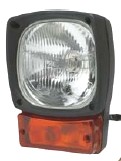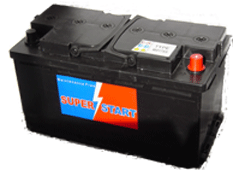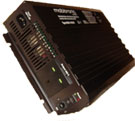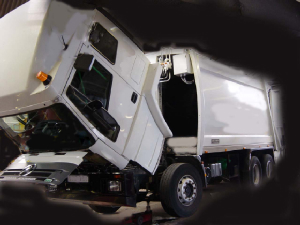
Vehicle Lighting Suppliers - Shropshire UK

Autoelectrics Mobile Product Services
Shrewsbury Shropshire
07703 558610
Supply of a range of vehicle lamps for Car Van HGV Tractors & Plant
Obligatory Vehicle Lighting
UK specifications for vehicle mandatory lighting requirements of roadgoing vehicles is dependant on the date of vehicle manufacture and type of vehicle.
Side lamps
Obligatory vehicle position lamps should operate at the front of the vehicle and rear of the vehicle.
2 x White position lamps are fitted at the front of the vehicle.
2 x Red position lamps, or tail lamps are fitted at the rear of the vehicle.
Check correct type of bulb is fitted for vehicle specification.
Bulb power is often either 12v 5w or 12v 10w for standard filament bulbs, or equivalent light output if led lamps fitted.
Rear tail lamp bulb may be of double filament type where combined with brake light. eg 12v 21/5w
Side Marker Lamps

Side marker lamps are fitted to commercial vehicles, vans, lorries, trailers.
Side marker lamps are often wired on the same circuit as sidelamps but may also be wired seperately.
Number Plate Lamps

Illumination of rear number plate is a statutory requirement for most road vehicles.
Stop Lamps
2 red stop lamps area fitted to the rear of the vehicle to advise other road users when the vehicle is braking and slowing down.
The brake lamp circuit is activated when the brake pedal is pressed causing operation of the brake light switch.
Brake lights may be wired through an additional relay, or body control module.
The brake light switch may also be used as an input sensor for engine management systems to reduce engine power output.
If brake lights do not work the fault may be caused by power supply, wiring, fuse, lamp holder or bulb.
Brake lights may be stuck on due to a short to power fault or defective / incorrectly adjusted brake light switch.
Later model vehicles may combine the function of tail and stop lamps using single filament bulbs which are operated at various brightness levels by power control via body control module.
Brake & Stop light switches
Direction Indicators
Left and Right direction indicators are fitted at the front and rear of vehicle with additional side repeaters.
Direction indicator lamps usually emit amber light.
Classic vehicle wiring circuit on negative earth vehicles is power supply from battery or ignition live b+ via fuse to
terminal 49 of a flasher relay, with relay output terminal 49a wired to switch then to either left or right lamp circuit as selected.
Negative earth return circuit is via bulbholder. Direction indicator bulbs are often 12v 21w or 28v 21w.
Flash rate of lamps is 60 to 120 flashes per minute. If lamps flash faster this may b caused bu insufficient circuit load often due to a blown bulb.
Indicator lamps which are on permanent and do not flash may be due to short to power from another circuit.
Indicator lamps which illuminate when other lights are operated may be caused by bad (high resistance) earth circuit.
Later vehicles may have indicator circuit wired via a multitimer or body control module. When a bcm is fitted indicator circuit may switch negative ground side of bulb circuit.
Hazard switch circuit may be wired in conjunction with indicator circuit.
Bulb types may vary, check vehicle spec.
Headlights
Main Beam Headlamps
Main beam headlamps are often fitted with 12v 55w bulbs.
Main beam headlamp circuit may include power supply from fused circuit via switch to relay to headlamps.
Classic british vehicles using the Lucas type wiring system often use colour coded wiring Blue to headlamp switch then Blue with White tracer for headlight main beam circuits.
Later model vehicles may operate headlight circuits via a body control module.
Dip Beam Headlamps
Dipped beam headlamp circuit may include power supply from fused circuit via switch to relay to headlamps.
Classic british vehicles using the Lucas type wiring system often use colour coded wiring Blue to headlamp switch then Blue with Red tracer for headlight main beam circuits.
Later model vehicles may operate headlight circuits via a body control module.
HID Headlights
High Intensity Discharge (HID) Headlights are fitted with a HID unit producing high voltage.
Rear fog lamp
A high intensity red rear fog lamp is often fitted to the offside rear of the vehicle. More than one fog lamp may be fitted.
Check correct type of bulb is fitted as types vary.
Reverse Lamps
Reverse lamps are triggered by a reverse switch often fitted to the gearbox or gear selector.
Reverse lamp bulbs are often 12v 21W or 28v 21w.
Reverse lamps not working or stuck on permanent is often caused by a faulty gearbox reverse switch.
Other reverse light fault causes may include loss of power due to blown fuse or broken wiring.
12v Reverse light bulb with audible warning
Check correct type of bulb is fitted as types vary.
Reverse Light Switches
Work lamps
Worklamps provide a flood light effect with wide angle beam to illuminate the working area.
Plough Lamps
Ploughing lamps are fitted to agricultural tractors and road gritters to provide extra work area illumination at night.
Road Gritter Spinner Lamp
High intensity red lamp fitted to illuminate spinner area
Driving lamps
LED driving lamp lightbars
Spot Lamps
Spot lamps provide a long range beam pattern.
Roof mount spot lamp with adjustable beam and 433Mhz remote controller. HC171466
Amber beacons and lightbars

Amber beacons and lightbars are used to provide visual warning of hazards when working off highway on site or at the roadside.
Switch panels for auxilliary lighting
Van load compartment interior lights
Installation of van interior LED strip lights. LED lamps have the advantage of lower power consumption than traditional filament type lamps providing white light to illuminate the van interior.
Alley lights
Vehicle roof mount side alley lights for night working
Trailer Lights
Installation of a range of trailer lights. Trailer light wiring and repairs.
Trailer electrics catalogue page link
A list of potential faults with vehicle lights
If lights are left on when the vehicle is off the vehicle battery will discharge, eventually breakdown may occur because
the vehicle battery may be too flat to start the vehicle.
High resistance in electrical wiring circuits caused by loose, corroded, or dirty connections, can cause failure or dim operation of lights.
Faults in wiring circuits, bulbholder, bulb, or switchgear can cause lights to flicker on and off.
Open circuit : Broken wiring or components can cause open circuit faults.
Blown bulb may cause open circuit fault.
Short to ground : Damage to wiring insulation, rubbing against chassis can cause short to ground faults.
Short to power : Exposed wiring or connections touching can result in a short circuit between wiring which
may cause a light to illuminate if another circuit is switched on, or alternatively, a lighting circuit shorted
to an auxilliary circuit could cause the auxilliary equipment to function accidently.
Lamp adversely affects the operation of another lamp can be caused by low voltage, high resistance, eg bad earth, or wiring short.
Electrical circuit may include wiring, fuses, switch, and lamp units. Later vehicles may operate lighting circuits via a body control module.
Vehicle Bulbs
BA7S Bulb

BA9S Bulb

T5 Wedge base bulb

Grey Tachograph Bulb

12v 5 watt capless bulb

12v 5 watt single centre contact (SCC) bulb

12v 5 watt double contact single filament SBC bulb

12v 21/5 watt bulb

12v 21 watt SCC single filament bulb

12v 21 watt SBC single filament bulb

12v 21w amber bulb

H1 Halogen Bulb

H2 Halogen Bulb
H3 Halogen Bulb

H4 Halogen Bulb

H4 Conversion
Halogen Bulb

H7 Halogen Bulb

H8 Halogen Bulb

H9 Halogen Bulb

H10 Halogen Bulb

H11 Halogen Bulb

HB3 Halogen Bulb

HB4 Halogen Bulb

Festoon Bulb

 Air Conditioning Climate Control
Air Conditioning Climate Control Alternators
Alternators Starter Motors
Starter Motors Batteries
Batteries Onboard Power
Onboard Power HGV Inspection on site
HGV Inspection on site